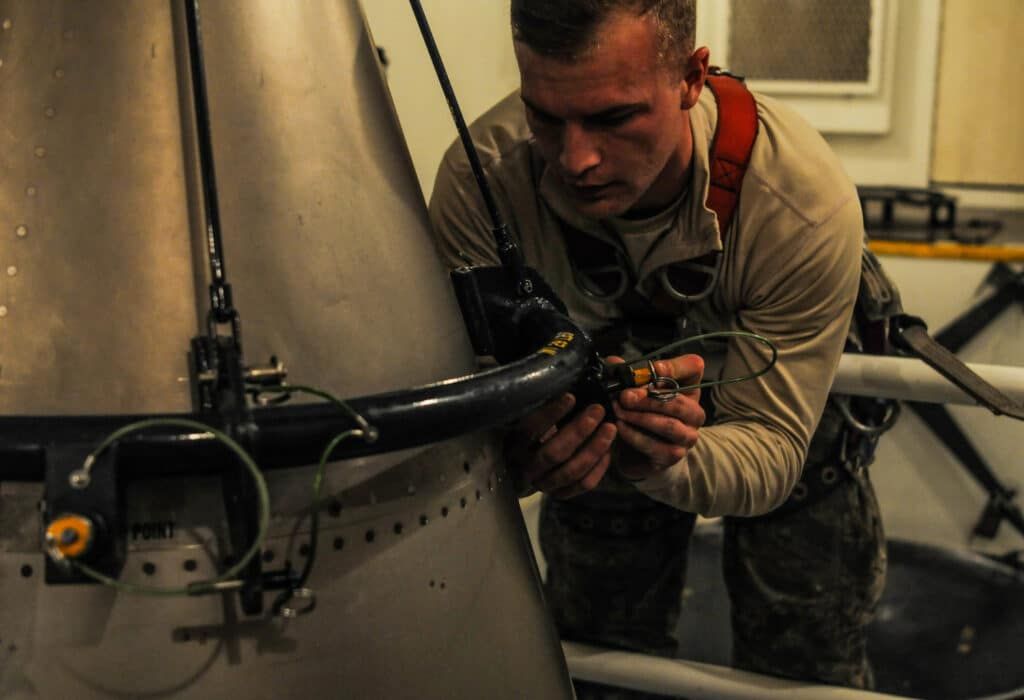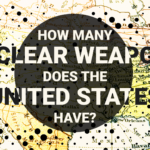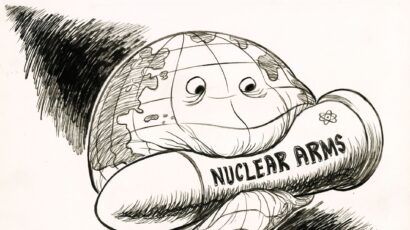There is no alternative: US-Russian nuclear arms control must restart. Now.
By Connor Murray | February 6, 2023
 A technician performs maintenance on a reentry system of a Minuteman III intercontinental ballistic missile (ICBM). The United States currently deploys 400 ICBMs under New START. The US-Russia treaty is set to expire in 2026. (Photo US Air Force / Braydon Williams)
A technician performs maintenance on a reentry system of a Minuteman III intercontinental ballistic missile (ICBM). The United States currently deploys 400 ICBMs under New START. The US-Russia treaty is set to expire in 2026. (Photo US Air Force / Braydon Williams)
The nuclear landscape today is far more complicated than it was during the Cold War. Tensions between the United States and Russia are at highs not seen, perhaps, since the Cuban Missile Crisis. At the same time, China appears to be aggressively increasing its nuclear capabilities, while North Korea conducted far more missile tests in 2022 than in any year since 1984. This environment is all the more reason to champion arms control over a potentially escalatory new arms race.
The New Strategic Arms Reduction Treaty (New START) is the only remaining arms control treaty between the United States and Russia. It limits the United States and Russia to 1,550 deployed strategic nuclear warheads each and provides a legally binding cap on what could otherwise become a nuclear arms race. New START is set to expire on February 5, 2026, and Russia’s ongoing war on Ukraine has cast a shadow on prospects to negotiate a follow-on to this agreement. Retaining New START would be the most desirable outcome, but it would be wise to consider an alternative if no follow-on is agreed to by 2026.
We’ve done the hard work before. The United States and the Soviet Union took many steps during the Cold War that made the world less safe. Nuclear saber-rattling by both countries enabled the nuclear arms race that culminated in a combined stockpile of over 70,000 nuclear warheads, putting much of the world’s population at risk. Even today, the arsenals of the United States and Russia still account for 90 percent of global nuclear warheads, though the numbers now hover at around 4,000 warheads each. How did we get from the peaks during the Cold War to the current numbers?
The answer is simple: Arms control.
Arms control is one of those terms that is thrown around by government officials, university professors, and other policy professionals as a semantic blanket for very intense, tiresome work. The work of arms control is often thankless, or at least it is not publicly recognized for its true value because it is hard to see how it makes everyone safer. And yet, even the leaders of the United States and the Soviet Union—despite their global competition for much of the second half of the 20th century—understood the importance of arms control.
A quick look back. As early as 1963, political leadership in the West and in the Soviet Union knew that an unbridled arms race was unsustainable. As a result, they signed the Limited Test Ban Treaty, also known as the Partial Test Ban Treaty, prohibiting explosive nuclear testing in the atmosphere, outer space, and under water. This treaty set the groundwork for a series of arms control treaties with the next one, almost 10 years later, going even further by addressing strategic nuclear weapons.
Landmark agreements—such as the Strategic Arms Limitation Treaty I (SALT I) and the Anti-Ballistic Missile (ABM) Treaty, both in 1972—set a precedent for diplomatic dialogue and created the basis for the enduring arms control framework embodied in New START. If the United States and the Soviet Union were able to agree to limits on their nuclear arsenals during the peak of the Cold War, the United States and Russia can do the same today.
Where we stand. Not only is there currently no process to negotiate a follow-on treaty to New START, but key components of the existing treaty are not functioning as they should. New START provides for 18 on-site inspections annually to allow experts from the United States and Russia to verify compliance with the treaty. The United States and Russia suspended these inspections at the onset of the COVID-19 pandemic, and Russia has continued “temporarily” suspending them following its invasion of Ukraine. There is no indication that either party is willing to resume them in the near future.
The United States and Russia have also not met under the bilateral consultative commission (BCC)—a forum to discuss compliance with and implementation of New START—since 2021 after Moscow “unilaterally postponed” a commission meeting planned for late 2022. Yet, as I argued elsewhere, the postponement of BCC talks goes against Russia’s own interests as the state of its economy, its military losses, and international isolation following its war in Ukraine leave the country ill-equipped to engage in a potential new arms race.
On January 31, the US State Department confirmed in its annual New START implementation report to Congress that Russia is not in compliance with the verification provisions of the treaty. As John Erath, senior policy director at the Center for Arms Control and Non-Proliferation, correctly pointed out, however, Russia’s noncompliance to New START “does not [necessarily] mean that they are building vast numbers of nuclear weapons secretly.”
Prospects. Russia and the United States are unlikely to agree on a formal follow-on treaty to New START anytime soon. The geopolitical reality of the war in Ukraine, and the procedural barriers to passing any arms control treaty through the US Senate do not pave a realistic path to any formal nuclear arms control treaty. Still, there are prospects for continued arms control dialogue that can limit the size of the world’s largest nuclear arsenals.
There is no need for a formal treaty to keep New START’s limits in place or even to further reduce existing nuclear arsenals. There is, however, a requirement for political will and the intense, tiresome work that went into previous arms control agreements. There is no doubt that willing officials in both the United States and Russia are up for this challenge, and they deserve our full support. For its part, the Kremlin should see, particularly given the financial cost of its war on Ukraine, that Russia is not in a position to keep pace in a new arms race with the United States and, potentially, China. These financial realities may provide an opening to dialogue.
Realistically, a political agreement (rather than a formal treaty) to maintain existing New START limits is the most achievable outcome by the time the treaty expires in 2026. The priority, therefore, should be to re-start and expand ongoing efforts of nuclear arms control.
Where to focus. Because they possess the world’s two largest nuclear arsenals, the United States and Russia have a responsibility to lead by example by continuing to limit and reduce theirs. However, other nuclear-armed countries also have a responsibility to be honest participants in the arms control conversation so the entire world can move away from the ever-present threat of nuclear weapons. In that context, multilateral communication in existing organizations and fora is crucial. This includes, for example, the review conferences of the Treaty on the Non-Proliferation of Nuclear Weapons (NPT) and meetings of the International Atomic Energy Agency.
While not all countries, including the United States, are parties to all existing agreements on arms control, such fora serve as important opportunities for dialogue and regular work on arms control. Russian thinly veiled nuclear threats in Ukraine demonstrate both the urgent need for arms control and the folly and unsustainability of relying on nuclear weapons for world security. Arms control will never be easy work, but the alternative of potentially unlimited nuclear arsenals is unacceptable.
Together, we make the world safer.
The Bulletin elevates expert voices above the noise. But as an independent nonprofit organization, our operations depend on the support of readers like you. Help us continue to deliver quality journalism that holds leaders accountable. Your support of our work at any level is important. In return, we promise our coverage will be understandable, influential, vigilant, solution-oriented, and fair-minded. Together we can make a difference.















